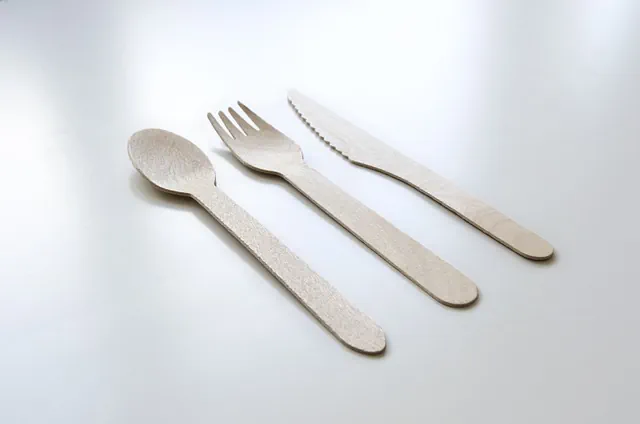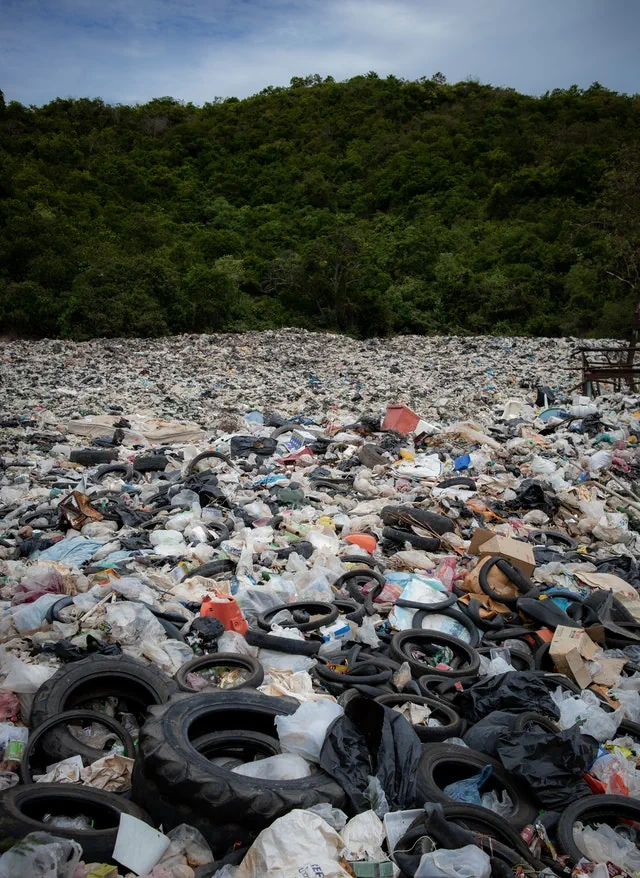
What is the Meaning of Biodegradable?

Table of Contents
What is the Meaning of Biodegradable?

Elderly person near a polluted river. pexels
If you’re planning to start an environmentally sustainable business, you should think about whether your packaging materials or products are biodegradable. That’s not all, though.
Every humane organization, individual, or household has a role to play to help preserve the earth. Unfortunately, none of us can do this with ease if we allow the current mix-up regarding the meaning of ‘biodegradable’ to reign.
You may have seen the word placed on some food labels, but that may not help someone interested in making greener shopping choices since the confusion persists.
What Does ‘Biodegradable’ Mean?
According to ACS Publications, almost everything we create or use, including non-bio plastics, will eventually break down after some time.
The Cambridge Dictionary defines biodegradable as the ability of materials to decompose naturally without poisoning the environment.
Some people use these definitions to take advantage of uninformed individuals.
For serious environmentalists, a material qualifies to be biodegradable if it can completely break down and return to nature naturally within about one year or less after disposal without exposing the earth to any form of danger. That’s the definition.
So, any material that remains on the planet earth as a waste for more than a year before breaking down and decomposing into natural elements doesn’t fall under the biodegradable category.
We know them better as non-biodegradables.
Here is an example of how different biodegrade materials according to the U.S. National Park Service:
-
Paper : Two-to-four weeks
-
Newspaper: Six weeks
-
Wool : One-to-five years
-
Aluminum : 80-to-200 years
-
Glass : One million years(!)
From this list, we can see biodegradable and non-biodegradable
Are biodegradable materials compostable? This is another related, familiar question. It can be a little unclear.
Remember, all compostable materials are biodegradable. However, compostable materials are unique in that after completely breaking down, they release nutrients into the soil. Some biodegradable materials don’t do this.
What are the Common Biodegradable Materials?
1. Bamboo
Bamboo thrives in many different climatic conditions. Moreover, it naturally regrows after harvesting.

Scenic view of bamboo trees. pexels
Since bamboo is natural, it has replaced non-biodegradable plastics in everything from drinking straws and water bottles to textile and furniture.
2. Cork
Cork is another biodegradable material. It comes from the Cork Oak’s bark.
This versatile material has fire-retardant properties. Besides, it is buoyant, elastic, light, and waterproof. It makes an excellent alternative to wood, leather, plastics, foam, and some fabrics.
Besides the fact that cork is biodegradable and recyclable, you can harvest it from mature trees without cutting the plants. Moreover, after harvesting the bark, the tree absorbs more carbon as they start to regrow the bark. This makes this material sustainable.
Many modern manufacturers appreciate the benefit of cork to the environment. You’ll find that the material is being used to make almost everything, ranging from purses and wallets to sports equipment and musical instruments.
3. Jute
As the name suggests, this natural plant fiber comes from the Jute plant. Like cotton, it is widely produced. Besides, the fibers are cheap and can be used to make many eye-catching high-end items, including hessian and burlap.
High-end clothing and rugs made from the fabric are trendy in the fashion market today.
Jute is not only biodegradable and recyclable but also compostable. So after using the products to serve your purpose, you can compost them in your garden to increase soil fertility.
Jute requires a limited amount of water. It also grows well without fertilizers and pesticides.
4. Avocado Bio-Plastic
Avocado bio-plastic is biodegradable, as the name suggests. It’s fully compostable, as well.
Avocado bio-plastic is an eco-friendly alternative to plastics, and many people use it to make cutlery, straws, and more.

Biodegradable spoon, fork, and knife. pixabay
5. Wood
We use wood in almost every industry, given that it’s one of the most staple materials. We can use it to make furniture, boats, ships, and more. Many experts have turned to plastics and metals, but they might not be sustainable due to environmental-safety concerns.
Treated wood is non-biodegradable, given that it’s not natural and lasts for years.
However, commercially grown trees are renewable and help in the reduction of carbon in the atmosphere. Compared to plastics, timber is a more sustainable option.
6. Mycelium
Mycelium refers to the mushroom fungi’s fibrous root structure. When it’s fully grown, you can bake mycelium to kill the fungi and use the remaining versatile, durable, and edible material. It’s a raw material for seed starter trays, cooler boxes, soap dishes, planter pots, and a wide range of other products.
Since mycelium is entirely biodegradable and compostable, it remains one of the most eco-friendly options.
7. Paper
In the near past, many people used paper to pack almost everything. However, since paper can’t be recycled too many times, its use is limited. Remember, whenever a paper is reused, its fibers become weaker and shorter.
Fortunately, it’s biodegradable and compostable. So, unless you have the glossy type, you can put it in your home compost.
The same applies to cardboards. Your cardboard won’t decompose as required if it is plastic-coated.
Why Is Biodegradable Better than Non-Biodegradable?
The initial cost of producing biodegradable products can be high. However, these materials are a better choice since they give you long-term benefits, are eco-friendly, create no or poisonous, reduce greenhouse gases, minimize pressure on landfills, and much more.
Keep reading for more details on why biodegradable materials are better than non-biodegradable. They are the best option due to the following reasons:
1. Easier to Recycle
Biodegradable materials take less time to decompose and can be recycled with ease through an organic process. Since the substances have no chemicals, they are also non-toxic, which makes recycling them highly possible.
Recycling helps to reduce landfill issues. Moreover, you can use most of the recycled bio-wastes as renewable energy or compost.
On the other hand, since non-biodegradable products are typically derived from poisonous chemicals, they aren’t safe for recycling. They are also challenging to disintegrate and recycle. For example, most plastic materials can take approximately 450 years to decompose.
2. Reduce Pollution
Given that biodegradable materials break down naturally within a short duration, the soil consumes them fast. This limits their chances of polluting the environment.
To effectively reduce pollution, we need to use professional waste management methods. Some bio-plastics can produce large amounts of methane when decomposing. Remember, this gas is 84 times more potent than CO2. Methane can accelerate global warming faster since it absorbs heat much quicker.
The decomposition is natural, so it doesn’t require a forced chemical reaction to start or end. As a result, we experience less pollution.
3. Consumes Less Energy
Manufacturers use less energy to make biodegradable products. Oil is one of the main ingredients of non-biodegradable materials like traditional plastics. As you likely know already, over-dependence on petroleum is dangerous to the environment.
Considering the types of waste produced during the mining and refinement of petroleum, we can see why non-biodegradable materials are harmful to the environment. So, since we need less energy, we can produce more bio-plastics and other similar products at a low cost without polluting the environment.
Moreover, since biodegradable products don’t stay in landfills for extended periods, we have less overall wastes to manage.
4. Less Landfills Required
Plastics and other materials are discarded in landfills since they are non-biodegradable. Due to this, governments, companies, and individuals are forced to convert land areas that should be used for industrial applications, residence, and agriculture to landfills.

Photo of landfill. pexels
However, that’s not the case with biodegradable materials like bioplastics. Since the soil can absorb these products in a matter of days or weeks, there’s no need to add more landfills to cater.
5. Improve Soil Fertility
Many biodegradable products are compostable. So, they release nutrients in the soil when decomposing. They also increase the soil’s nutrient and water retention capacity, required for plants’ healthy growth.
Non-biodegradable materials, on the other hand, hinder the penetration of roots. They also hardly decompose within reasonable timelines. For that matter, the composability of biodegradable materials makes them friendlier to the farming sector.
6. Support Business Branding Efforts
All businesses have specific financial goals to achieve within specific timelines. Most future-focused enterprises and corporations also have environmental goals in addition to the traditional objectives.
Professionals in upper-management levels understand their organizations’ responsibility to meet the highest standards of environmental compliance. When these individuals neglect any of the two, they lose credibility and customers and eventually close and go home.
Many customers are happy to pay more for sustainability. According to a survey involving 30,000 consumers in 60 countries, many people are highly inclined to purchasing biodegradable products.
The survey reveals that 74% of individuals born between 1977 and 1995 are highly interested in working with companies that sell eco-friendly items. The poll also indicates that 66% of consumers worldwide want to buy products and services from firms committed to sustainability.
Conclusion on the Meaning of Biodegradable Materials
The high volume of wastes across the world is a significant concern for the environment and humans. The best way to handle this growing threat is to use the term ‘biodegradable’ in a way that helps our ecosystem. This means we should avoid materials that take more than 12 months to break down naturally. Individuals, households, and organizations should do more by proactively using biodegradable products and recycling them.
There are numerous other biodegradable materials. In case we missed one or two of your favorites, feel free to inquire to find out whether it qualifies to join the list of biodegradable materials that we need to preserve the earth.